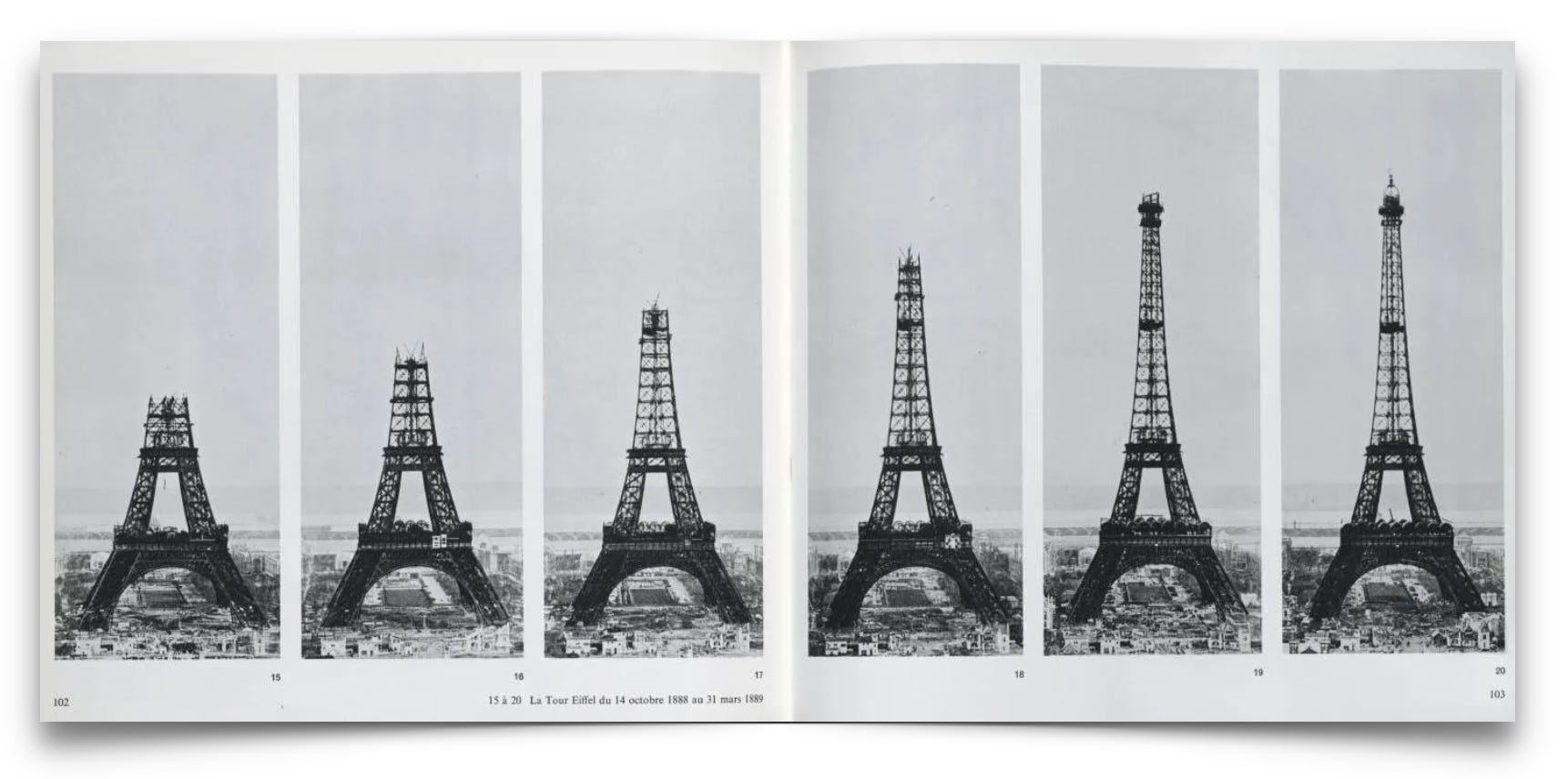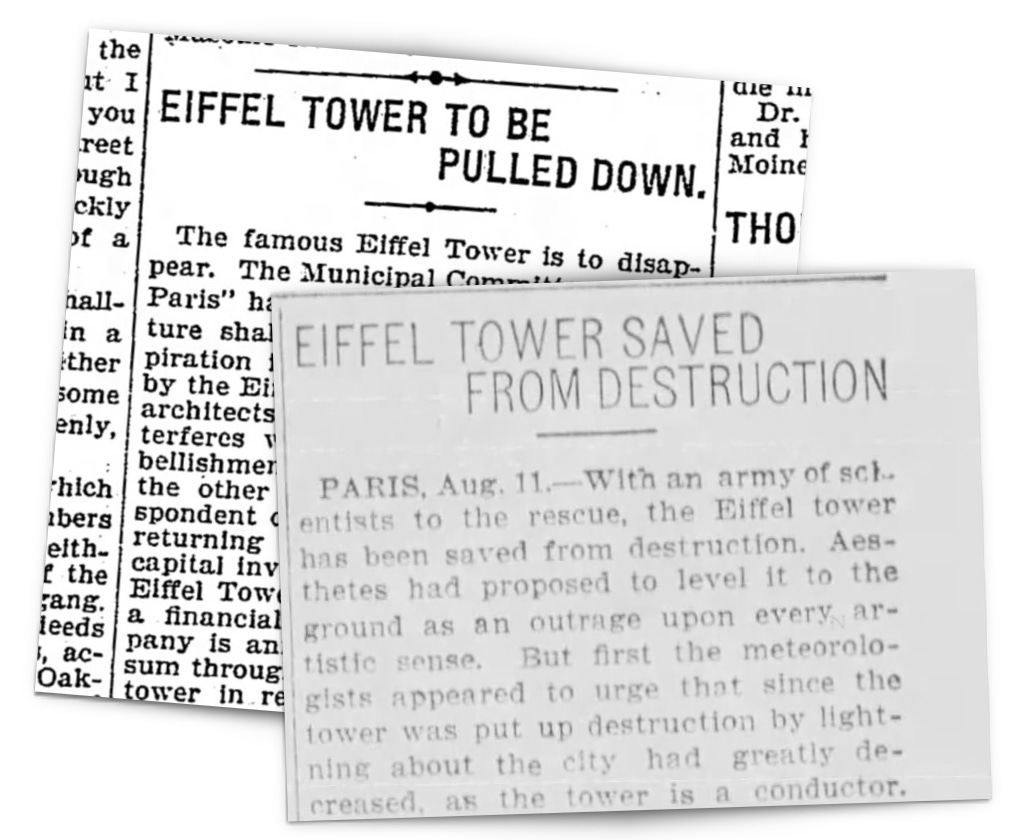The Eiffel Tower was Called Techno-Dystopian
The Eiffel Tower is as iconic of France as croissants and baguettes, and equally emblematic of Paris as Notre-Dame or the Arc de Triomphe.
Yet, before completion for the 1889 World’s Fair - the project was treated by some as an industrialist “Tower of Babel” that was anti-ethical to French taste and culture:
…a month after construction began in 1887, a group of prominent French artists published an open letter titled ‘Artists against the Eiffel Tower’ featured on the front page of Parisian Newspaper ‘Les Temps.’
The letter - signed by some of the greatest creative minds in France - implored that the project “menaced French art and history”, calling the tower a"useless and monstrous" structure, which would "irreparably disfigure and dishonour" Paris.
The entire text, translated from French, can be heard below:
We, writers, painters, sculptors, architects, amateurs impassioned with the beauty, until now intact, of Paris, are coming to protest with all our might and all our indignation, in the name of unrecognized French taste, in the name of threatened French art & history, against the erection, in the very heart of our capital, of the useless and monstrous Eiffel Tower…
Hear the entire translation below:
Its authors claimed this “dizzyingly ridiculous tower” would overshadow Paris’s iconic monuments like Notre Dame and the Arc de Triomphe, leaving all Parisian architecture "humiliated" and "dwarfed" in the "shadow of this odious column of bolted sheet metal.”
To these artisans the project was “industrial vandalism”, a “stupefying dream” from the "grotesque and mercantile imagination of a machine-maker” - they were of course referring to Gustave Eiffel - the towers designer and name-sake:
One source of contempt for the project was that Mr. Eiffel - an engineer - won the contract to build his tower over that of venerated architect Jules Bourdais, who had initially proposed a tower made of stone, more fitting with Parisan architecture.
The official Eiffel Tower site describes this tension:
The two projects were total opposites: stone versus iron, an architect versus an engineer, classic versus modern... The battle took place in the press, with Eiffel and Bourdais mobilizing their respective supporters.
Opponents of Eiffel sowed concerns the structure - soon to be the largest tower in the world - would collapse in high winds. Some scientists were even purportedly concerned that the iron structure might magnetize everything in France that would in turn “demoralize everything with nails for a long distance.”
Monsieur Eiffel’s Defense
Monsieur Eiffel did not care for his critics, and would defend his vision with gusto in an interview in the very same issue of ‘Le Temps’ the letter of protest appeared. He’d say of the project:
“There is an attraction in the colossal, a special charm, to which the ordinary theories of Art are not applicable”
Eiffel would note that the Pyramids of Egypt were not aesthetic feats, but engineering ones - that inspired the world.“Why should what is admirable in Egypt become hideous in Paris?" Mr. Eiffel would ask rhetorically. This in turn would see him painted as arrogant and delusional, cartoons would caricature him as such:
Ridicule would not be confined to France, The Boston Globe would say “The bare idea of a cast-iron tower of that height is terrible” and that models of it “do not mitigate the terrors of imagination.” A British newspaper would say if construction went ahead, France“will soon be the proud possessor of the biggest and ugliest Tower the world has ever seen” a move that would prove Parisians had “lost the capacity of distinguishing between the sublime and the ridiculous.”
What makes the strident opposition to Eiffel Tower even more amusing is that the whole thing was only meant to be temporary - after 20 years it was due to be deconstructed on December 31, 1909. Those old opponents of the tower worked to ensure this would happen - but Eiffel pushed back, to extend its presence.
Mr. Eiffel won - again - with scientists, astrologers, meteorologists and military leaders all coming to the towers defense, for its practical uses for their professions. The Eiffel Tower is now a permanent fixture of Paris and its namesake is now more associated with Paris and French culture than any of its high-profile detractors.
Our last post:
Skateboarding: from Nuisance to Olympic Sport
Skateboarding was considered a silly and childish phenomenon for much of its existence











